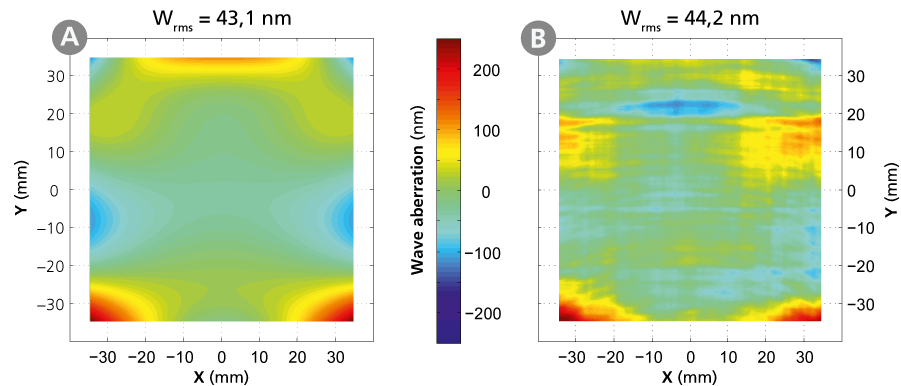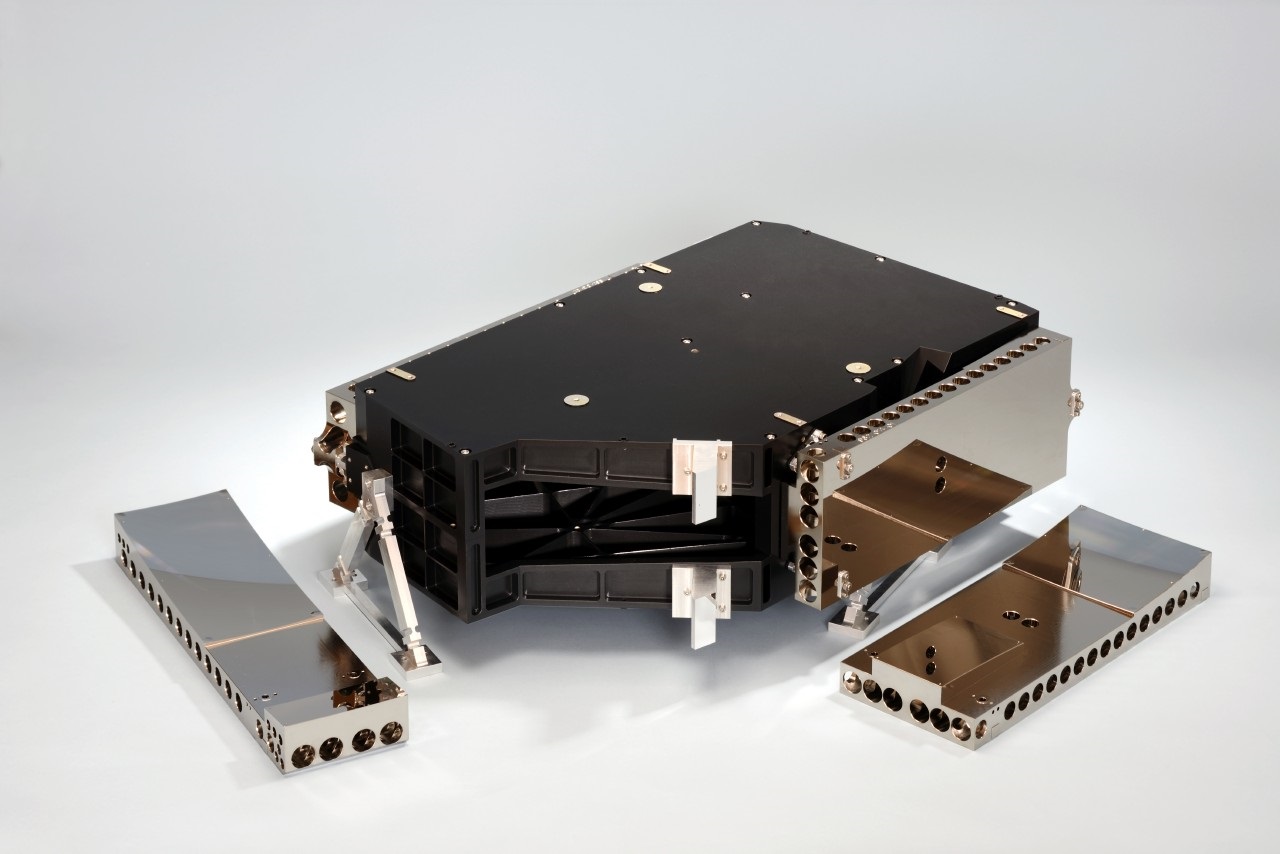
Modern optical telescopes for Earth observation and remote sensing operations often rely on off-axis mirror designs with aspheric or free-shaped surfaces in order to generate an unobscured image while at the same time covering a large field of view and maintaining an excellent system quality. Continuous improvements in manufacturing and test methods allow for the fabrication of freeform surfaces with low tolerance on figure and roughness. Integration and assembly remain time consuming and expensive steps within the overall system development.
At Fraunhofer IOF, continuous research on strategies for an easy integration of metal based optical systems is conducted. The basic principle relies on a sequential machining of optical and mounting surfaces at the mirror body in the same machine setting. A fabrication of high quality interfaces at telescope frames and all mirror bodies reduces the considerable degrees of freedom during the system assembly. If a suitable optical design is present, further simplifications can be obtained by modularizing two optical surfaces and machining them mechanically coupled on a single mirror body. In order to further evaluate machining and mounting strategies, an anamorphic imaging telescope was built within the project VISTEL, funded by the German Aerospace Center DLR. The system operates diffraction limited within the visible spectral range and uses four off-axis freeform surfaces, where each two are fabricated on a single mechanical carrier. The necessary tolerance on figure and roughness of the single surface require for a complete process chain based on servo assisted diamond machining, polishing, and figure correction techniques. The picture above shows the manufactured telescope demonstrator with both mirror modules M1M3 and M2M4, the figure errors of which were reduced to < 12 nm rms each. Microroughnesses of < 0,5 nm rms were realized based on the applied polishing processes. The modularization of the mirror surfaces reduces the relevant degrees of freedom for system integration from 24 to 3 only. The experimentally obtained wave aberration is in excellent agreement to the optical design after simplified system assembly and some fine adjustments. Based on the fundamental design principles, a simplified fabrication of metal based freeform optical systems with diffraction limited performance at visible wavelengths will be addressed in the future.
Authors: Matthias Beier, Wilko Fuhlrott, Andreas Gebhardt, Stefan Risse
